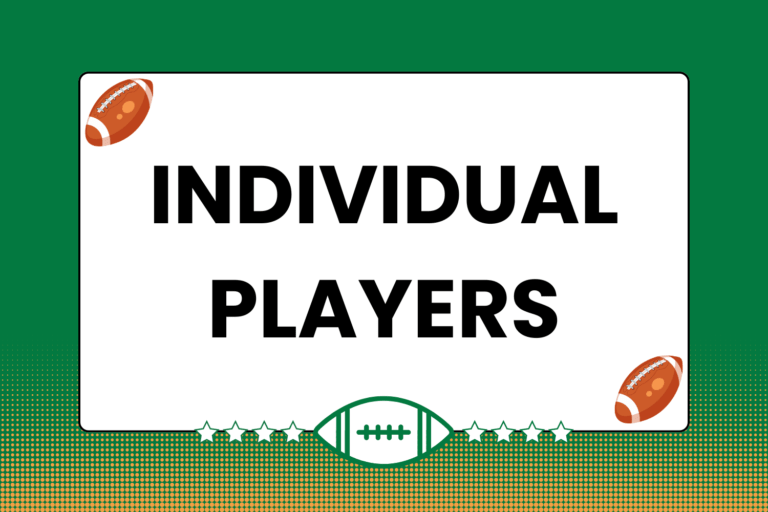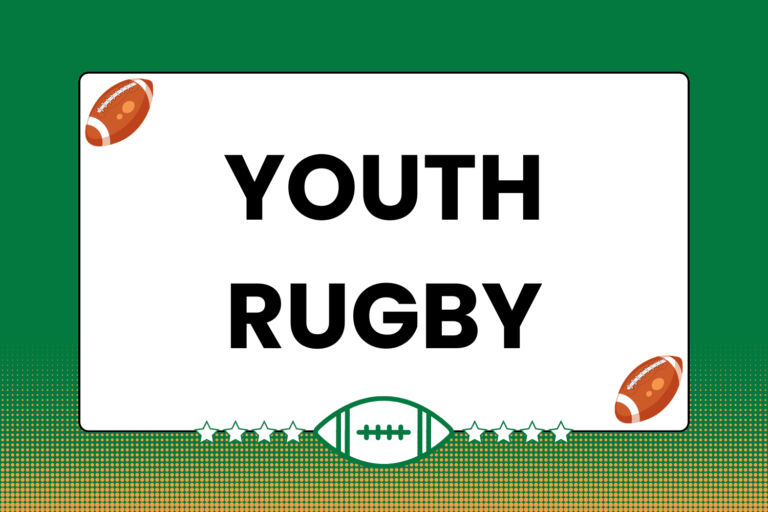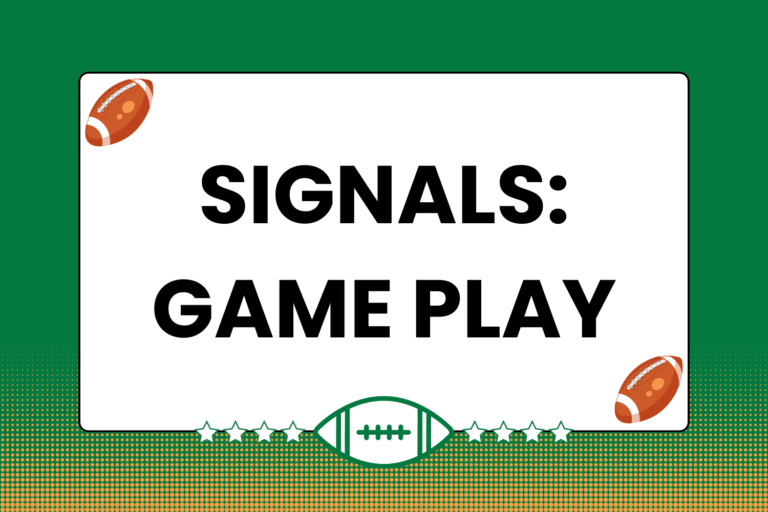There are essentially two groups of players on each side of a rugby match: The Forwards and the Backs. Many comparisons have been made about the different characteristics of these two groups, ranging in nature from mostly objective observations (forwards are big; backs are fast) to more subjective associations (forwards are meatheads with very limited ball-handling skills; backs are dainty creatures who don’t like to get their uniforms dirty). Although the subjective comparisons are usually humorous and an excellent source of debate, this explanation of the different rugby positions – including various names and responsibilities inherent in each – will strive for an objective tone, in the hopes that doing so will make it easier to understand the identity of each position.
This guide will feature information about the various Forwards positions in rugby. For information on the Backs positions, please go to the Rugby Positions Explained: Backs guide.
Life in the Pack
The forwards of a team wear jerseys numbered 1 through 8 in Union, and 8 through 13 in League. Forwards are the bigger of the two groups of players; the collective group of forwards is also referred to as the ‘pack,’ which is primarily involved in the scrums, rucks, mauls and line-outs of a match.
Though the majority of the ball-carrying is done by the backs, sometimes forwards are used to punch the ball straight ahead short distances. In these instances, the forward is expected to charge straight ahead, either running over people or carrying them as long as possible. It’s not unusual to see forwards carry the ball close to the try line, as they can usually keep running after the first hit or two by opposing players.
Here is a list of the assorted forward positions, including the responsibilities for each and different jersey numbers/names with which they’re associated, depending on the code of rugby:
“Whoso would be a man, must be a non-conformist, and preferably play in the pack.”
Ralph Waldo Emerson
19th Century American Author & Philosopher
Props
Props wear numbers 1 &3 in Union rugby, and 8 & 10 in League rugby. There are two props in a pack, called loosehead (left prop) and tighthead (right prop). The two names refer to the side of the scrum on which they reside, and more specifically how they align with the opposing team’s pack during a scrum.
- The left prop is called ‘loosehead’ because that player only meets up with the other team’s prop during a scrum, meaning that player’s head is unbound on both sides, and loose.
- The right prop is called ‘tighthead’ because that player’s head is between the prop and hooker of the other team, making for a tighter fit.
Both sides demand enormous strength and attention to technique. However, the tighthead position is seen as the more difficult and important of the two because of the fact that the tighthead prop has to deal with the opposition pushing from two sides, compared to the loosehead prop having only one player to push against.
Regardless of which side a prop occupies, they’re almost always the heaviest and strongest of the forwards. Along with the hooker – who is less concerned with pushing, and more concerned with raking the ball back after a put in – the props are the front of the pack, and must provide the strongest force of resistance to the other team’s pack during a scrum. They are also critical in both winning and supporting rucks and mauls, and play important parts during a line-out by either lifting a jumper or binding on to the ball carrier.
Hooker
The Hooker wears number 2 in Union, and number 9 in League. Regardless of the association to a certain ‘profession’, the position of Hooker gets its name from the primary responsibility of that player during a scrum, namely ‘hooking’ the ball back with a foot after it’s been rolled in. Still of a decent size (but not nearly as big as the props), the hooker resides between both props, and is supported by the props by tightly binding on with them to the point that the hooker is able to free up one foot for raking the ball. Because the props on either side of the hooker will need both feet on the ground to push as much as possible, by raking the ball backwards the hooker is the first player with a chance to secure possession of the ball during a scrum.
The hooker is also the player responsible for throwing the ball in during a line-out. Along with helping on rucks and mauls, the hooker usually dictates the movement of the forwards during a match, setting up a short run by another forward or instructing other forwards on where to position themselves when on defense.
In rugby League, the hooker is also commonly responsible for acting as the ‘Dummy-half’, which refers to the person that passes the ball out after the ball carrier has been tackled.
Locks
There are two Locks in a pack, with no difference inherent to their position in, or responsibilities during, the scrum. Locks wear numbers 4 & 5 in Union, and 11 & 12 in League. They support the props and hooker during a scrum, both by binding on underneath and keeping the front row (props and hooker) tight, and by providing additional pushing strength. They are often the tallest players on the team, and will do the majority of the jumping during a line-out. Locks are also considered to be better ball carriers than most of the other forwards. Like all other forwards, they are involved in most of the rucks and mauls that take place during a game. As both locks make up the second row of a pack, the position itself is also commonly referred to as ‘second row’, and in rugby League these players are known as ‘Second-row Forwards’.
Flankers
There are two Flankers in the pack that wear numbers 6 & 7, but the flanker position only exists in Union rugby. Much like locks, there are two flankers in a pack. Unlike locks, however, there are two different names for the flankers, ‘Blindside’ and ‘Openside,’ depending on which side of the scrum they’re located.
- The blindside flanker will support whichever lock is positioned closest to the nearest touch-line (also known as the blind side of the pitch) by binding on at the side.
- The openside flanker does the same thing from the lock closest to the open side of the pitch (the side furthest from the touch line).
- Both flankers should be taller/bigger players, capable of moving with some speed yet maintaining a high level of physicality.
No forward is allowed to disengage from the scrum until the ball is called out (except the eight man in some instances). So because the flankers are located on either side of the pack, they’re usually the first forwards to engage in play (along with the eight man). Depending on which side won the scrum, the flanker will usually either make a play on the opposing team’s scrum half – the first player on the other team to play the ball from a scrum – or act as a passing option from the scrum half on their team if they won the scrum. For the same reasons, flankers are expected to be the first players to go after the ball when it’s loose or turned over.
Either way, flankers are sometimes a temporary connection between forwards and backs, as they often are involved with both groups during a match. The exception to this characteristic concerns League teams, as the flanker positions don’t exist in the League code of rugby.
Eight Man
The Eight Man is the forward located at the very rear of the pack, and occupies the spot where the scrum half picks up the ball from a scrum. In Union rugby, the eight man is also referred to as the No. 8, as that’s the number worn by the eight man; in League it’s number 13. The normal eight man is similar to a lock in terms of physical size, though the eight man wants to be slightly faster than the locks, instead of slightly stronger.
- The eight man supports the locks by binding on with them from behind, providing extra stability and a platform from which the locks can drive forward.
- The eight man also drives, but is less concerned with pushing and more concerned with securing the ball to make it easy for the scrum half to pick it up.
Along with the locks and hooker, the eight man is a regular fixture in rucks and mauls, and is sometimes an additional jumper in line-outs. In rugby League, the equivalent of the eight man is called the loose forward, and is both located and responsible for the same things as an eight man.
The most unique quality of the position is that the eight man is allowed to disengage from the scrum and pick up the ball, much like the scrum half does, though the scrum half is never considered part of the scrum. This player effectively transfers from being a part of the scrum to the player that restarts play outside of it. Because of this allowance, the eight man is sometimes included in the back-line schemes to run with the ball.
Forwards Sub-categories
The pack (forwards), aside from being broken up into individual positions, is also sub-categorized according to the players’ locations in the scrum, and their overall responsibilities:
- Front Row (Union and League): The Front Row consists of both props and the hooker, who all make up the first line of players on each team in a scrum.
- Tight Five (Union only): The Tight Five are composed of the front row (props and hooker) and both locks, or the second row. They’re referred to as the tight five because all five of these players bind together tightly before a scrum, compared to the flankers and eight man who are also attached, but not as tightly.
- Loose Forwards (Union only): Though ‘loose forward’ is an actual position in the League code of rugby, in Union the term Loose Forwards refers to the flankers and eight man, as they are not as tightly fixed to the rest of the pack (tight five) during a scrum.
- Back Row (League only): In League, the Back Row consists of both second row forwards and the loose forward; it’s common for players in these positions to be referred to as ‘back rowers.’
Staying Strong
It is the responsibility of the forwards to handle the vast majority of physical play during the course of the match. Forwards must attack any stoppage of play, either to retain possession of the ball for their team, or to try and take it away from the other team. While the backs score most of the points in a match, it is often due to the work of the forwards that the opportunity to score points even exists.





